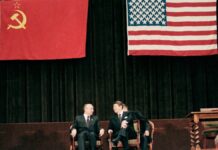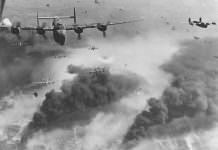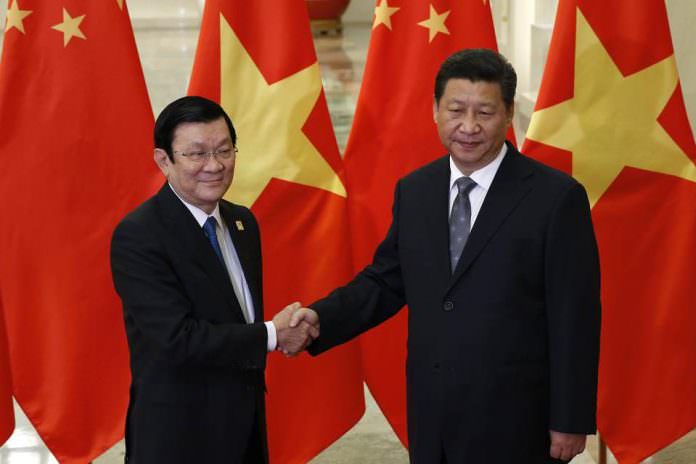Today’s relations between China and Vietnam are the continuation of all what they have done from the past years. These two nations were not in a good friendship or relationship through time to time. Wars were the background of their relations in the past, though both of them were influenced by colonials. Since the end of the Vietnam War in 1975, the relations between China and Vietnam soured following the reunification of South Vietnam and North Vietnam after the Vietnam War though China assisted North Vietnam during the Vietnam War. However, their relations started from the prior history era until now.
Butuh VPN gratis kualitas premium? Dengan Moove VPN, semua konten di internet bisa diakses tanpa batas!
The relations between China and Vietnam, as it has been said, were backgrounded of warfere since the prior history era. China and Vietnam have interacted as the history said, Chinese Warring States Period and Vietnamese Thuc Dinasty of the 3rd century BC as noted in the Vietnamese historical record Đại Việt sử ký toàn thư. Wars and wars continued after France came or interfered their conflicts and fought a war in 1884 which ended in a Chinese defeat. The result was Tiensin Treaty that recognized French dominance over Vietnam and Indochina, spelling the end of formal Chinese influence on Vietnam, and the beginning of Vietnam’s French colonial period.
During the World War II, China and Vietnam had to faced the invasion and occupation of imperial Japan. Late in the war, with Nazi Germany and Japan nearing defeat, US President Franklin D. Roosevelt privately decided that the French were not to reacquire their colonial property of French Indochina after the war was over. Roosevelt offered the Kuomintang leader Chiang Kai-shek the entirety of Indochina to be put under Chinese rule. Reportedly, Chiang Kai-shek replied: “Under no circumstances!” After the war, 200,000 Chinese troops under General Lu Han were sent by Chiang Kai-shek to invade northern Indochina north of the 16th parallel, with the aim of accepting the surrender of Japanese occupying forces. These troops remained in Indochina until 1946. The Chinese used the VNQDD, the Vietnamese branch of the Chinese Kuomintang, to increase their influence in Indochina and put pressure on their opponents. Chiang Kai-shek threatened the French with war to force them to negotiate with the Vietminh leader Ho Chi Minh. In February 1946, Chiang Kai-shek forced the French to surrender all of their concessions in China and renounce their extraterritorial privileges, in exchange for withdrawing from northern Indochina and allowing French troops to reoccupy the region.
In the Cold War era, two greatest powers were divided as communist and non-communist. The communist government of North Vietnam was rejected by the United States (U.S.) for its resemblance to the Soviet Union and the People’s Republic of China (PRC). Disagreements soon arose over the idea of elections and reunification (North and South Vietnam), and the U.S. began to increase the contribution of military advisers, even the Soviet troops and weapons supplies to strengthen the communist military. Controversial attack on U.S. ships sparked the American military strikes against North Vietnam military installation and placement of more than 500,000 troops in South Vietnam. The Vietnam War soon began after the North Vietnam had been supported by both communist states USSR and China. The Vietnam War was part of the Cold War. Two warring camps were the Republic of Vietnam (South Vietnam) and the Democratic Republic of Vietnam (North Vietnam). United States, South Korea, Thailand, Australia, New Zealand and the Philippines allied with South Vietnam, while the USSR and China supported North Vietnam which is a communist state. This war resulted in massive exodus of Vietnamese citizens to other countries, especially the United States, Australia and other Western countries, so that in these countries can be found a fairly large Vietnamese community. After the end of this war, both are also united Vietnam in 1976. One of the most famous victims of the Vietnam War was Kim Phuc. Though China supported North Vietnam during the Vietnam War, in 1979 (after the Cold War), their relations turned sour when Sino-Vietnam War happened.
Vietnam was in a very precarious security situation in 1978. The Chinese were bent upon exploiting the large Hoa (ethnic Chinese population) in South Vietnam for the purposes of destabilisation. They had lent full support to the genocidal regime of Pol Pot in Cambodia and were encouraging it to adopt an aggressive approach on the Vietnam-Cambodia border and open another front for Vietnam. The aim was to keep Vietnam militarily preoccupied and boxed in with the help of its neighbors. The Vietnamese correctly assessed the looming peril of a two front war situation. They decided upon a very high-tempo, pre-emptive offensive to deal with the Pol Pot threat in Cambodia, which would enable them to secure this flank before they turned North to face China squarely. The Vietnamese Military Invasion of Cambodia was therefore a major Coup de Main operation. The Chinese invasion in the border was the reason for the death of 300 civilians and troops which were dead after the assault by Vietnamese. Vietnam invaded Cambodia which was the closest ally of China. China wanted to take back the Vietnamese troops from Cambodia, and it caused the Sino-Vietnam war in 1979.
The northern Vietnam was invaded by Chinese and captured some of the northern-most cities in Vietnam. China declared that the gate to Hanoi was open and that their punitive mission had been achieved and retreated back into China O\on March 6th. China and Vietnam claimed victory in the last of the Indochina Wars of the 20th century; as Vietnamese troops remained in Cambodia until 1989 it can be said that the PRC failed to achieve the goal of dissuading Vietnam from involvement in Cambodia. The Chinese achieved their strategic objective of reducing the offensive capability of Vietnam along the Sino-Vietnam border by implementing a scorched earth policy. The Chinese also achieved another strategic objective of demonstrating to their Cold War foe, the Soviet Union, that they were unable to protect their Vietnamese ally. As many as 1.5 million Chinese troops were stationed along China’s borders with the Soviet Union at the time and were prepared for the outbreak of a full-scale war
The war caused thousand casualties from both China and Vietnam. Over 40,000 Vietnamese troops were killed in the war and over 20,000 Chinese troops were killed. Late in the war, On March 6, China declared that the gate to Hanoi was open and that their punitive mission had been achieved. On the way back to the Chinese border, the PLA destroyed all local infrastructure and housing and looted all useful equipment and resources (including livestock), which were mainly donated by China to support Vietnam’s economy prior to the war, completely paralyzing the economy of northern Vietnam. The PLA crossed the border back into China on March 16. While China claimed to have crushed the Vietnamese resistance, Vietnam claimed that China had mostly only fought against border militias. This allowed both sides to claim military victory, as both sides claimed to have taught their opponent a lesson. Sporadic fighting on the border occurred throughout the 1980s, and China threatened to launch another attack to force Vietnam’s exit from Cambodia. In the 1980s, China unsuccessfully attempted to pressure the Soviet Union into obtaining Vietnam’s withdrawal from Cambodia.
The aftermath of the war had different effects. China and Vietnam each lost thousands of troops, and China lost 3,446 million yuan in overhead, which delayed completion of their 1979–80 economic plan. To reduce Vietnam’s military capability against China, the Chinese implemented a “scorched-earth policy” while returning to China, causing extensive damage to the Vietnamese countryside and infrastructure. Although Vietnam continued to occupy Cambodia, China successfully mobilized international opposition to the occupation, rallying such leaders as Cambodia’s deposed king Norodom Sihanouk, Cambodian anticommunist leader Son Sann, and high-ranking members of the Khmer Rouge to deny the pro-Vietnam regime in Cambodia diplomatic recognition beyond the Soviet bloc. China improved relations with ASEAN by promising protection to Thailand and Singapore against “Vietnamese aggression”. In contrast, Vietnam’s decreasing prestige in the region led it to be more dependent on the Soviet Union, to which it leased a naval base at Cam Ranh Bay.
Border skirmishes continued throughout the 1980s, including a significant skirmish in April 1984. Armed conflict only ended in 1989 after the Vietnamese agreed to fully withdraw from Cambodia. This conflict also saw the first use of the Type 81 assault rifle by the Chinese and a naval battle over the Spratly Islands in 1988 known as the Johnson South Reef Skirmish. In 1999 after many years of negotiations, China and Vietnam signed a border pact, though the line of demarcation remained secret. There was a very slight adjustment of the land border, resulting in land being given up to China, which caused widespread complaints within Vietnam. Vietnam’s official news service reported the implementation of the new border around August 2001. Again in January 2009 the border demarcation with markers was officially completed, signed by Deputy Foreign Minister Vu Dung on the Vietnamese side and his Chinese counterpart, Wu Dawei, on the Chinese side. Both the Paracel (Hoàng Sa: Vietnamese) (Xīshā: Chinese) and Spratly (Trường Sa: Vietnamese) (Nansha: Chinese) islands remain a point of contention. The December 2007 announcement of a plan to build a Hanoi-Kunming highway was a landmark in Sino-Vietnamese relations. The road will traverse the border that once served as a battleground. It should contribute to demilitarizing the border region, as well as facilitating trade and industrial cooperation between the nations.
While Vietnam has remained relatively conflict-free since its Cambodia days, tensions have arisen in the past between Vietnam and its neighbors, especially in the case of China since both nations assert claims to the Spratly Islands, an archipelago in a potentially oil-rich area of the South China Sea. Conflicting claims have produced over the years small scale armed altercations in the area. In 1988, more than 70 Vietnamese troops were killed during a confrontation with Chinese forces, when China occupied several islands under Vietnamese control in the Spratly Islands. China’s assertion of control over the Spratly Islands and the entire South China Sea has elicited concern from Vietnam and its Southeast Asia neighbors. The territorial border between the two countries is being definitively mapped pursuant to a Land Border Agreement signed in December 1999, and an Agreement on Borders in the Gulf of Tonkin signed in December 2000. Vietnam and Russia declared a strategic partnership in March 2001 during the first visit ever to Hanoi of a Russian head of state, largely as an attempt to counterbalance China’s growing profile in Southeast Asia.
In the conflict of South China Sea, both Vietnam and China were asked not to search natural resources in the region which still in dispute by the both nations and their neighbors. The sea which is contested by countries along the sea considered of containing wealth of resources including fish and oil. The South China Sea later triggered China and Vietnam and the other countries around the sea in dispute of claiming the sea and its contain. But of all the countries that claim territory in the South China Sea, the dispute between China and Vietnam is the loudest. Before 1974, China and South Vietnam are both controlled most Paracel islands. This annexation sparked a brief armed conflict in 1974 that killed 18 people. And since then the Chinese have complete Paracel islands. In 1988, the naval conflict between the two countries broke out in the Spratly Islands in the south-exactly-Coral Chigua that killed 70 people Navy Vietnam Besides the rich oil and gas, water area of 3.5 million square kilometers it is also known as the traffic is very strategic international trade. In May and June, Vietnam accused the Chinese ships maritime equipment damage Vietnam which was installed in the territory of the country’s exclusive economic zone. Although China denies any provocation, the news has led to a barrage of anti-Chinese protests in the streets of Hanoi. However, having lasted about three months, security forces forcibly dispersed Vietnam anti-Chinese actions related to the planned visit by senior officials to Vietnam Bamboo Curtain country.
As the conflicts go by, both China and Vietnam later planed to end their conflicts, including the South China Sea conflict. Governments of both nations later lead them into a peace-discussion, taking up their problems among the South China Sea into peace. The conflict soon will be ended up, foreign ministers of both countries have met and ready to agree in the settlement of South China Sea. The agreement later led China and Vietnam into a good-relations. As the member of ASEAN, Vietnam also opened a good treaty and good friendship with China which will influence the relations to another members of ASEAN. ACFTA may be agreed if all members of ASEAN has good relations with China, especially Vietnam itself.
The support of China to North Vietnam in the Vietnam War was one of their relations. The other form of the relations will be found in so many forms as Vietnam joined ASEAN in 1995. Vietnam’s membership in ASEAN which was achieved in 1995 is widely regarded as a powerful symbol and most significant result of Hanoi’s new foreign policy as part of the dai moi renovation process. In 1995 Vietnam scored a triple diplomatic success by joining ASEAN, establishing official relations with the United States and signing a ground-breaking framework cooperation agreement with the European Union. The political actors have very successfully and actively worked to build and strengthen as many international cooperation ties as possible.
China and Vietnam have made so many relations even wars are part of them. Ever since the Vietnamese nation-state emerged as an independent entity in the first millennium it has had to contend with ‘the tyranny of geography’. Vietnam shares a common border with China its giant neighbor to the north. Even today with a population of eighty-eight million. Vietnam ranks as a middle sized Chinese province. PRC was the first state to recognize the communist Vietnam in January 1950. Vietnam and China return in seeking harmonious bilateral relations these days. The momentum was a meeting between the Secretary General of the Communist Party Phu Trong in Hanoi with Chinese Ambassador to Vietnam Kong Xuanyou. On that occasion, as reported by Xinhua, Xuanyou began its work in Vietnam. In that meeting, Trong said that Vietnam consistently emphasized the importance of improving the traditional friendships and comprehensive treaties with China. The two agreed that their conflicts (the South China Sea conflict etc) will be resolved. In June 2011, Vietnam announced that its military would conduct new exercises in the South China Sea. China had previously voiced its disagreement over Vietnamese oil exploration in the area, stating that the Spratly Islands and the surrounding waters were its sovereign territory. Defense of the South China Sea was cited as one of the possible missions of the refurbished Chinese aircraft carrier, formerly the Soviet vessel Varyag, which began sea trials in 2011. In October 2011, Nguyen Phu Trong, the General Secretary of the Communist Party of Vietnam, made an official visit to China at the invitation of General Secretary of the Communist Party of China Hu Jintao, with the aim of improving bilateral relations in the wake of the border disputes.
References:
- http://en.wikipedia.org/wiki/China%E2%80%93Vietnam_relations
- Womack, Brantly. 2006. China and Vietnam: The Politics of Asymmetry. New York: Cambridge University Press.
- Dosch, Jorn. 2006. Vietnam’s ASEAN Membership Revisited: Golden Opportunity or Golden Cage?. Institute of Southeast Asian Studies.
- Thayer, Carlyle A. 2010. Vietnam and Rising China: The Structural Dynamics of Mature Asymmetry. Southeast Asian Affairs.
- http://international.okezone.com/read/2012/02/14/413/575211/china-vietnam-siap-akhiri-konflik-laut-china-selatan
- http://en.wikipedia.org/wiki/Foreign_relations_of_Vietnam
- Harry Carter, A History of the Oxford University Press, (Oxford: Clarendon Press, 1975).




























